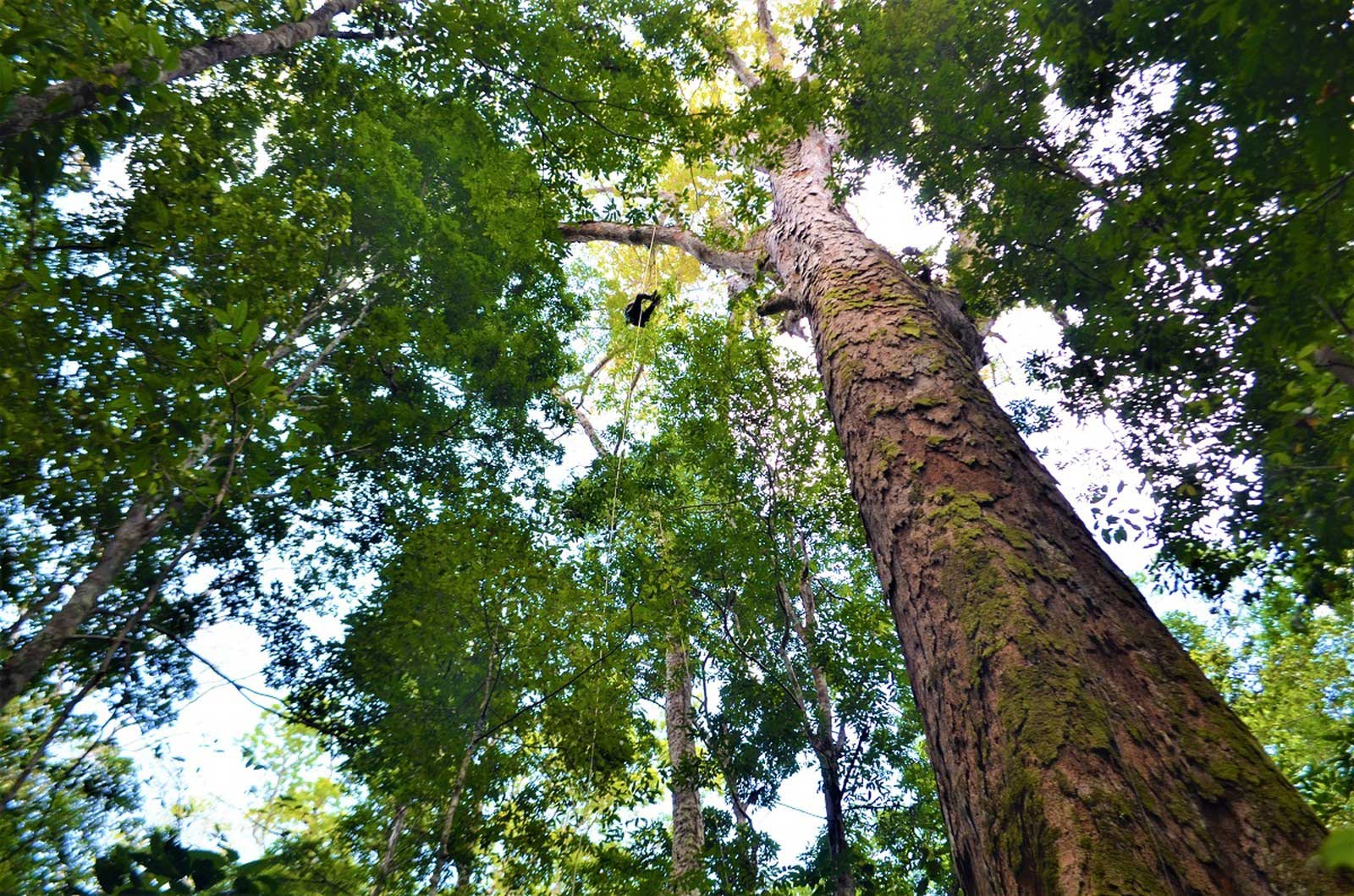
In the Amazon rainforest, the tallest tree ever discovered has finally been reached by scientists. Reaching the enormous tree, which is the size of a 25-story skyscraper, required three years of planning, five excursions, and a two-week trek through a deep rainforest.
The giant tree, whose top juts out high above the canopy in the Iratapuru River Nature Reserve in northern Brazil, is an angelim vermelho (scientific name: Dinizia excelsa) measuring 88.5 meters (290 feet) tall and 9.9 meters (32 feet) around — the biggest ever identified in the Amazon, scientists say.
Researchers traveled 250 kilometers by boat up dangerous rivers
During their expedition from September 12 to 25, researchers traveled 250 kilometers by boat up dangerous rivers and another 20 kilometers on foot across a rugged rainforest landscape. The team doctor suspects that a dangerous spider bit one member of the 19-person excursion.
Forest engineer Diego Armando Silva of Amapa Federal University, who helped organize the trip, said it was all worth it. “It was one of the most beautiful things I’ve ever seen.” Just divine, “Silva, 33, told AFP. “You’re in the middle of this forest where humankind has never set foot before, with absolutely exuberant nature and trees.”
The gigantic tree was initially observed in satellite pictures in 2019
As part of a 3D mapping study, the gigantic tree was initially observed in satellite pictures in 2019. Later that year, a mission to the tree was organized by academics, researchers, and local guides. However, a 10-day expedition ended in failure when the squad quickly ran out of supplies and one of them got sick. They eventually had to come back.
Because loggers are constantly interested in the Angelim Vermelho wood, the land is in danger of being destroyed. Additionally, illicit gold miners who are notorious for causing ecological havoc are encroaching on the Iratapuru reserve. In the Brazilian Amazon over the past three years, average annual deforestation has climbed 75% from the preceding ten years.
In order to determine the age of the tree, the origin of the region’s abundance of enormous trees, and the amount of carbon they store, the group slept beneath the tree and gathered samples of its leaves, soil, and other components. The tree, according to Silva, is at least 400–600 years old.
